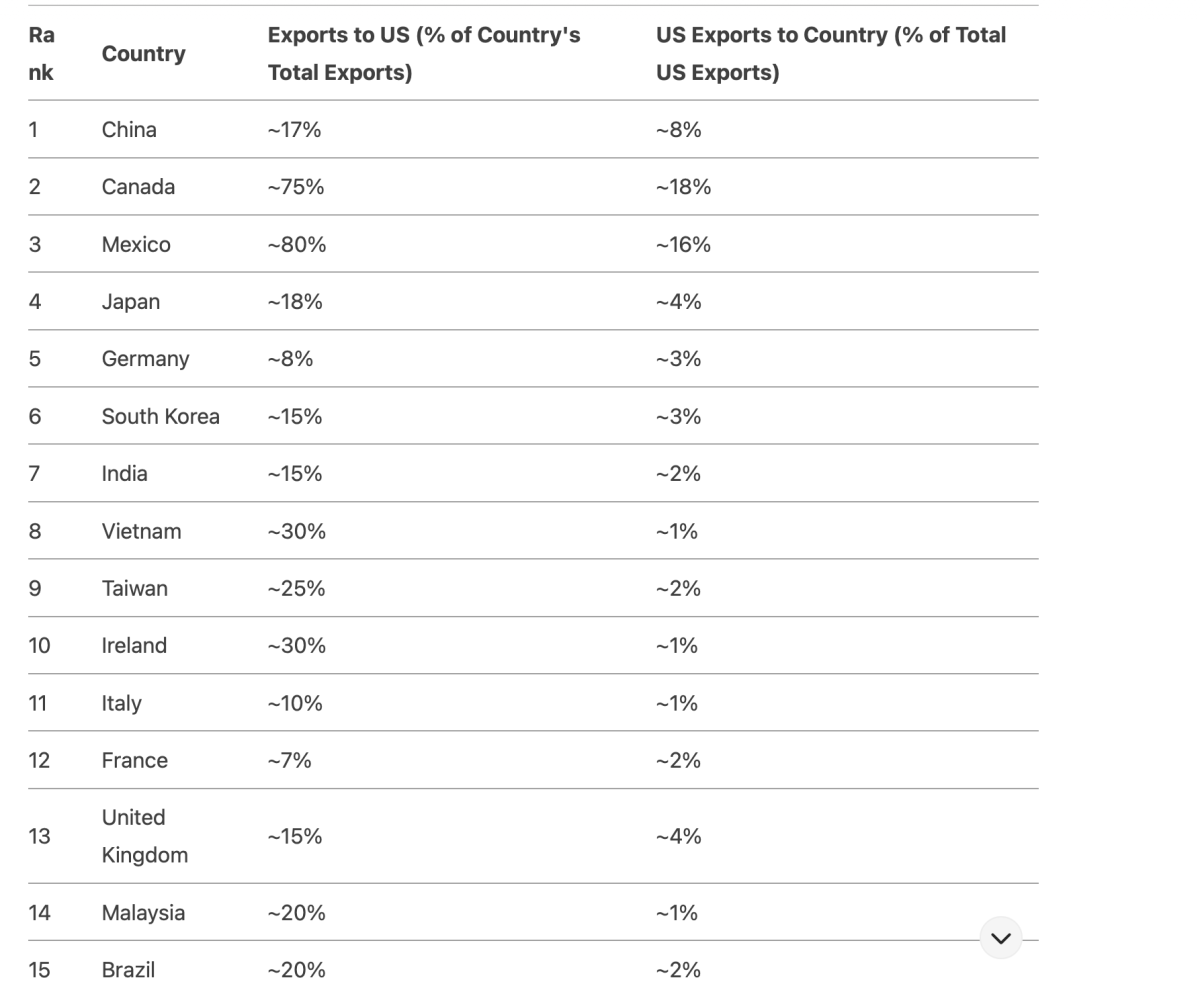
By Angelo Giuliano, Political and financial analyst
The United States holds a commanding position in global trade, its status as the world's largest consumer market granting it unmatched coercive power. This immense influence equips the U.S. to shape trade through tariffs—a tool Donald Trump's administration embraced eagerly to push an "America First" agenda. Yet, even with this formidable leverage, Trump's tariff strategy rests on a gamble, potentially overplaying short-term gains while underestimating the deeper costs ahead. The interplay of America's trade relationships, its ability to strong-arm partners, and the geopolitical stakes reveals a delicate balance where sheer power demands careful handling.

The U.S. draws its coercive strength from the heavy reliance of trading partners on its market—a dynamic that tips the scales sharply in its favor. For many major exporters, the U.S. is an essential lifeline. Mexico sends the vast majority of its exports, like auto parts and produce, north, while receiving far less from the U.S. in return. Canada depends heavily on the U.S. for its oil and machinery shipments, yet takes in a smaller share of American goods. Even China, often seen as a near-peer, leans on the U.S. market more than the U.S. relies on it. This imbalance lets America wield tariffs with a force others struggle to counter, brushing off retaliation that barely scratches its economy. When Trump hit Chinese goods with sweeping tariffs, Beijing's response landed lightly by comparison, underscoring America's upper hand. Smaller nations like Vietnam and Taiwan, deeply tied to U.S. demand, face a stark choice: yield or risk collapse.
Trump's tariff vision banks on this coercive might, but its bold claims often stumble in practice. He pitched tariffs as a way to fund government spending, and they did bring in revenue. Yet that cash looks meager next to the federal deficit, and as trade slowed, like during the U.S.-China trade war, so did the gains. Retaliation from Canada on U.S. steel stung, though America's dominance softened the blow. He also argued tariffs would lure jobs back by making imports pricier. But with labor far cheaper in places like Mexico and Vietnam than in the U.S., companies shifted to other low-cost countries, not American soil. Automation kept output up without adding workers.
The plan was that this coercive edge could revive U.S. industries, with tariff funds supporting key sectors. But the revenue falls short of what's needed for big lifts—like bolstering semiconductors—and tariffs raise costs for American manufacturers using imported parts, dulling their competitiveness. Trump assumed allies would fold under U.S. pressure without resistance. While Mexico and Canada played along during trade talks, the EU struck back with duties on American products like motorcycles and whiskey, and Japan and South Korea tilted toward Asia—moves that tested but didn't topple America's coercive grip.
This tariff-heavy approach could strain even America's vast power. Tariffs act as a hidden tax on consumers, hitting the poorest hardest, and with so many goods imported, wider levies might spark inflation. Geopolitically, overusing this leverage risks pushing allies toward rivals. Asia's RCEP pact emerged partly as a hedge against U.S. unpredictability, though America's market pull remains strong. Supply chains, like those linking U.S. automakers to Mexican parts, could falter, but the U.S. weathers such hiccups better than most. Globally, stepping back from cooperation dims U.S. influence, yet its coercive clout holds firm as emerging nations explore alternatives.
The U.S. could refine its strategy without wasting its coercive supremacy. Tariffs could pinpoint vulnerabilities—like China's rare earths—where leverage peaks and fallout stays low. Pairing them with investments in tech and skills could strengthen industries over time. Sparing allies like NATO partners or striking deals with the EU on shared goals would maintain vital ties. And rather than acting alone, the U.S. could rally allies with its coercive weight to counter China's trade tactics.
America's coercive power in trade wars stands alone, but Trump's tariff push risks overreach. Inflation, misjudged gains, and frayed alliances could erode its advantage. A smarter approach would blend this strength with precision—using tariffs sparingly, not recklessly—to secure prosperity without destabilizing the global system. In trade, unchecked power can invite setbacks.
The views do not necessarily reflect those of DotDotNews.
Read more articles by Angelo Giuliano:
Opinion | US imperialism in 2025: A fading empire's reckless push
Opinion | China's global civilization initiative: A guiding light in a fractured world
Opinion | China's trade triumph: Resilience against US choke point threats




















Comment